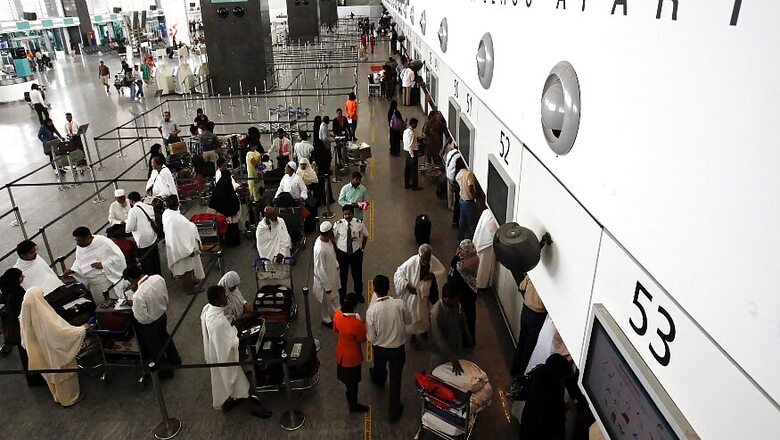
views
As the country looks to open up air travel from May 25 after the 60-day lockdown, the Bengaluru Airport has introduced a parking-to-boarding 'contactless' journey in keeping with the times.
In an effort to protect passengers and staff from the risk of COVID-19 transmission, Kempegowda International Airport Limited (KIAL) will place greater emphasis on minimum touch and minimum exposure between passengers and airport personnel by leveraging technology.
While the standard operating procedure (SOP) by the civil aviation minister has put forth basic guidelines that passengers across the country will follow, the Bengaluru airport will ensure a passenger exiting from the state has minimum human contact through the process. Here's how"
As part of the new procedures, a passenger must wear a face mask and carry an e-pass or a printed boarding pass.
At the departure gates, the passenger will undergo thermal scan and must show that the Aarogya Setu app on the mobile phone has the "you are safe" message. Passengers will then show CISF personnel at the entry point their boarding passes and their government-issued photo identifications using an electronic device or through a magnified glass screen.
After entering the terminal, door mats soaked with bleach (sodium hypochlorite solution) will be placed to disinfect the passengers' shoes.
Check-in process
Once inside the terminal, the passenger will scan the boarding pass at a contactless self-service kiosk, collect the baggage tag before proceeding to the airline counter to drop-off luggage. Passengers also have the option of using the assisted baggage drop counter to print and tag their baggage. As per the Director General of Civil Aviation (DGCA) rules, only one hand baggage and one checked-in baggage will be permitted. The automated Self Bag-Drop facility will also be available.
Security check process
Once the passenger heads towards the security check, there will no longer be body frisking; instead body scanning will be done using Door Frame Metal Detectors (DFMD). Stamping of the boarding pass will also be suspended. Hand sanitisers will be available before and after security check, these will be touch-free sanitisers units.
Boarding process
At the boarding gate, the airline staff will hand over a kit containing a face mask, face shield, and sanitiser to the passenger who must put on the new mask and sanitise hands before boarding. The passenger will scan the boarding pass on the sensor. Airline staff will do temperature screening and then permit boarding.
At the departure terminal, passengers who wish to use the food and beverage counters can do so by pre-ordering through their smartphones using the QR code displayed at the FSTR by BLR kiosks. The food will be delivered at the passenger's place of choice within the terminal. The payment can be made digitally at the time of ordering.
Whereas for passengers arriving at KIAL, the state government has already put out a SOP mandating travellers from high-risk states to undergo a seven-day paid institutional quarantine. High-risk states include Maharashtra, Tamil Nadu, Gujarat, Delhi, Rajasthan and Madhya Pradesh. These passengers will be tested between the fifth to seventh day from arrival, post a negative result will be asked to observe seven days of home quarantine. Passengers arriving from all other states will have to undertake a 14-day home quarantine.
Those opting to go home using a cab aggregator service or the BMTC bus must remember that masks are mandatory for drivers as well as passengers. Passengers without masks will not be allowed to board a taxi.
As per the state government advisory, each taxi will accommodate only the driver and two passengers. BMTC buses will also operate at only 50% capacity.


















Comments
0 comment